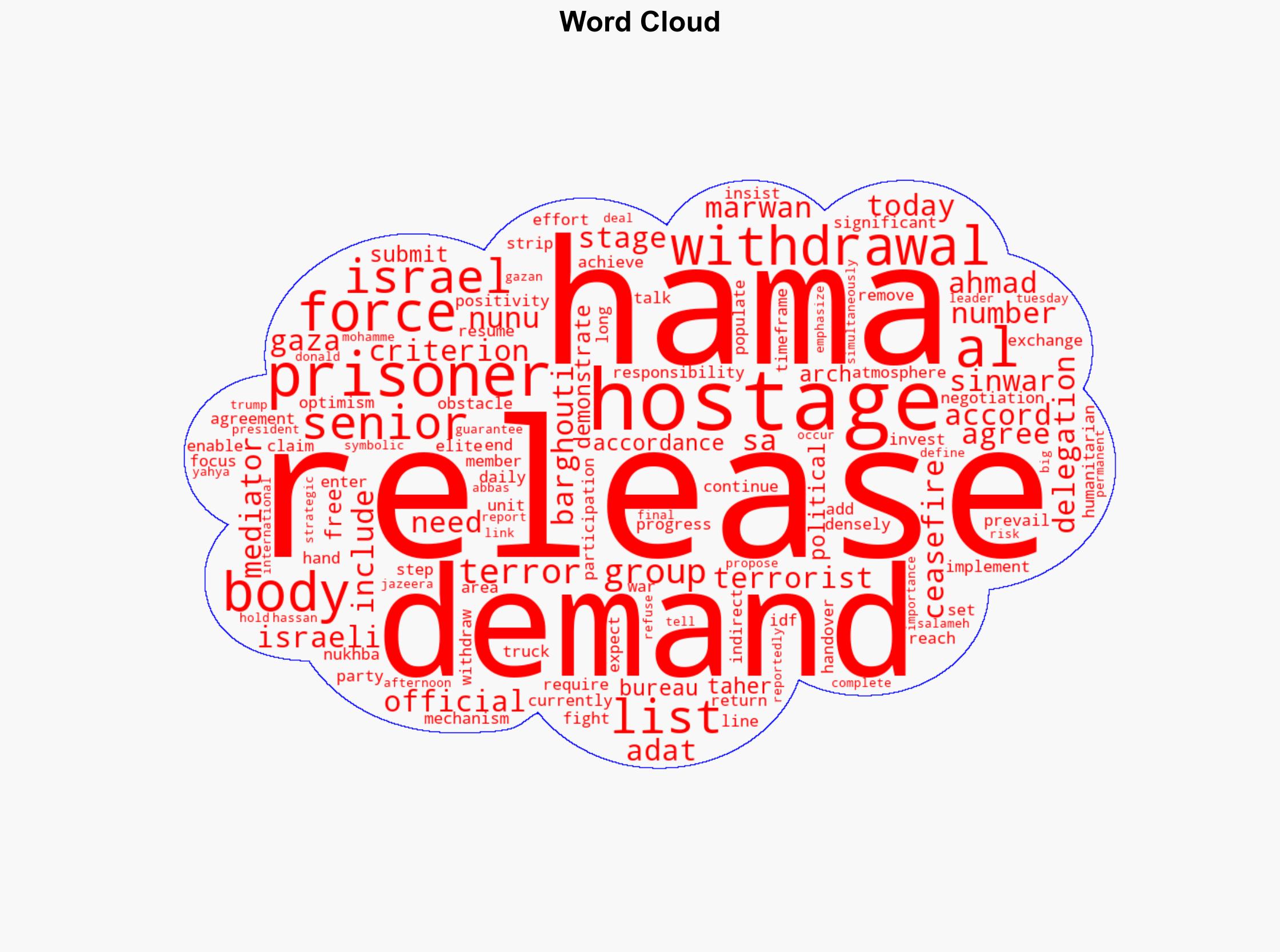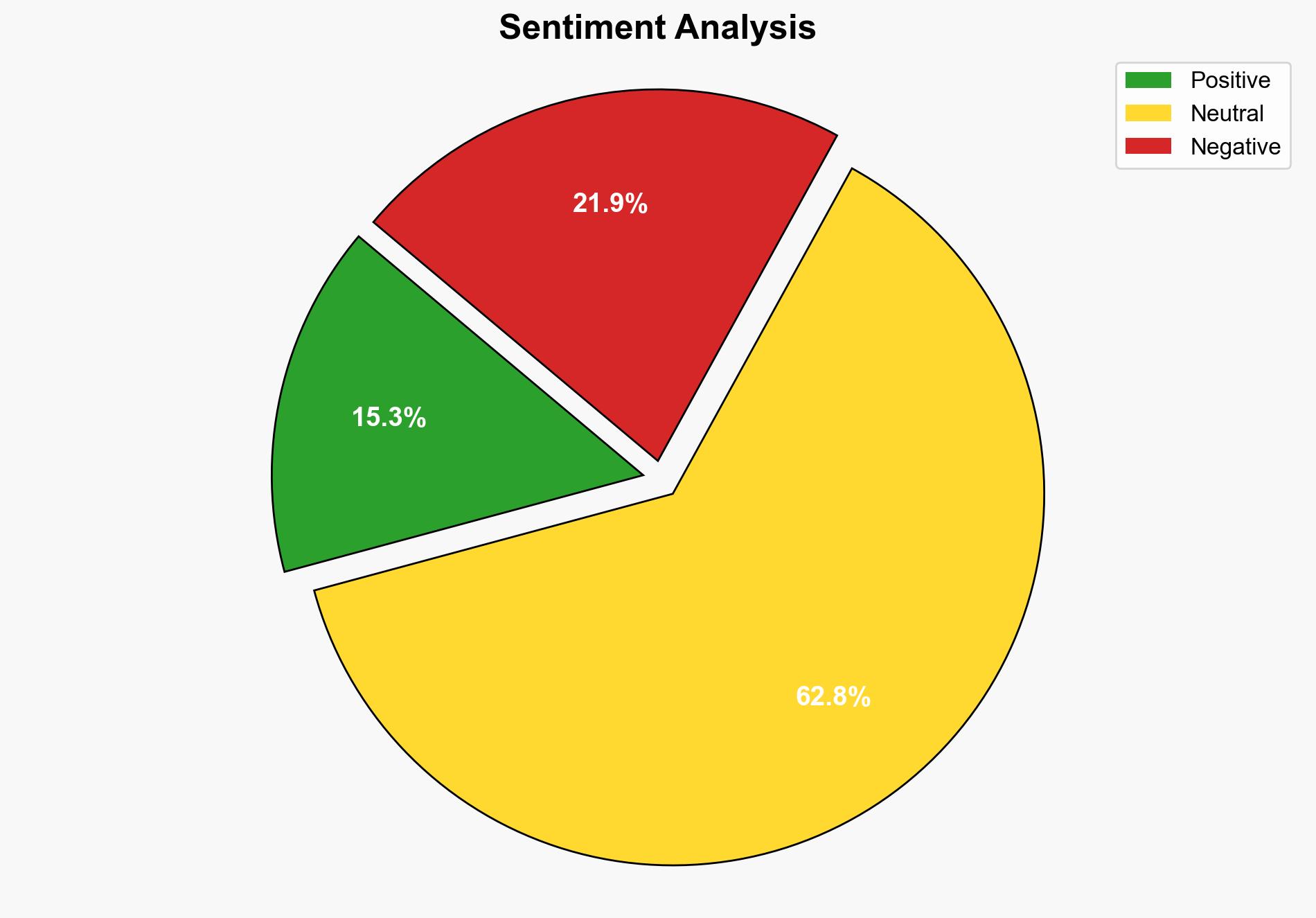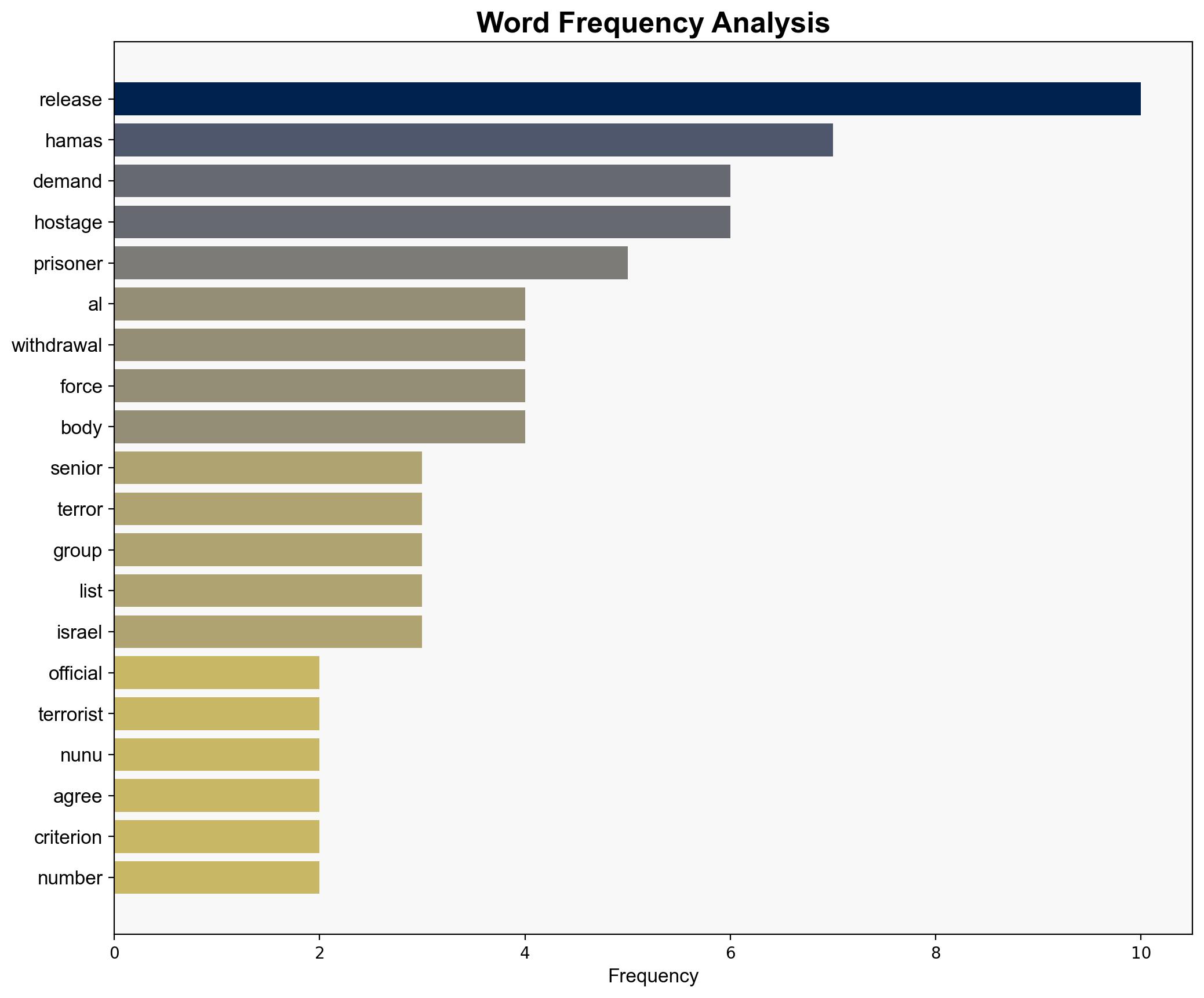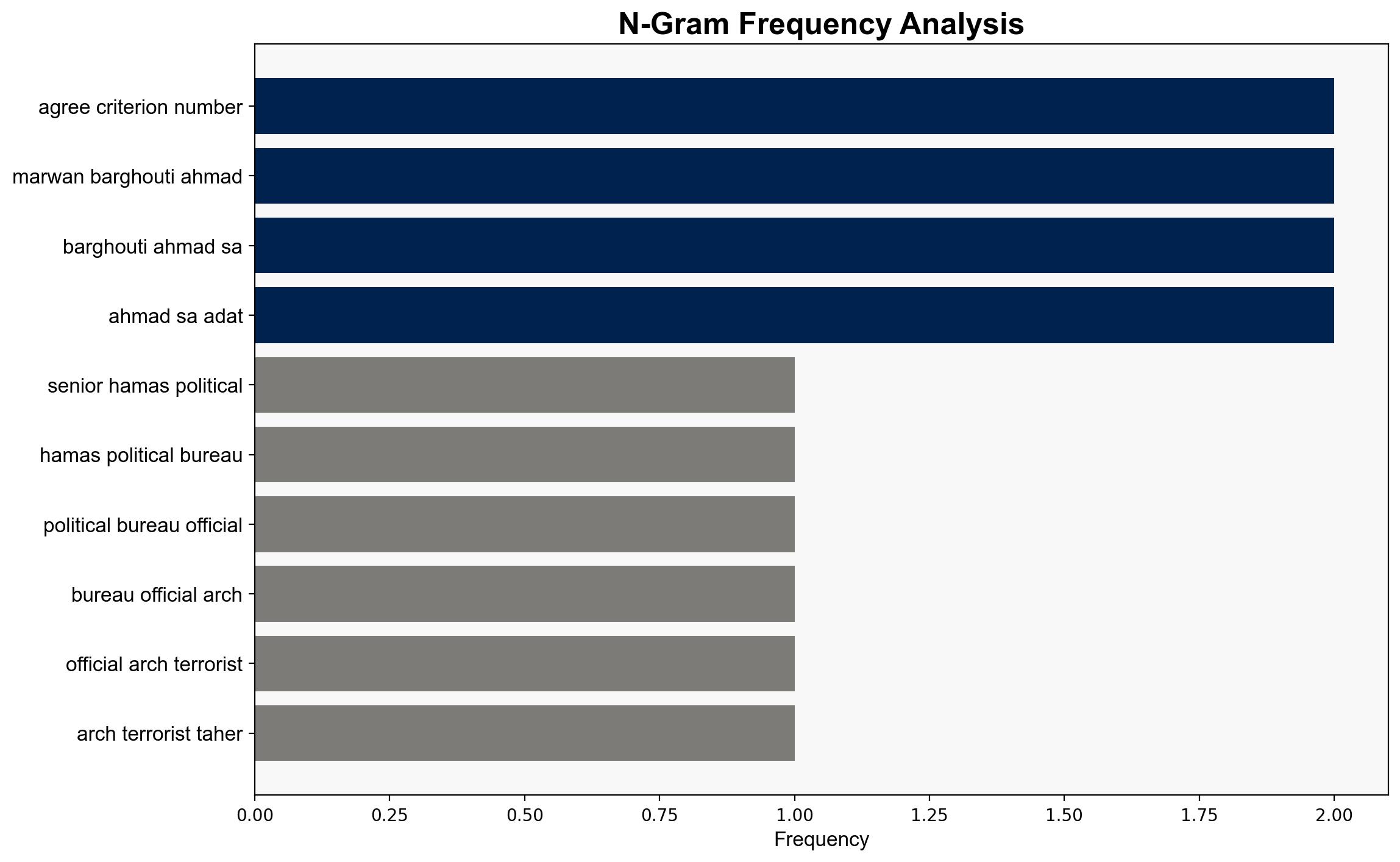Hamas demanding Nukhba terrorists’ release in ceasefire deal – Israelnationalnews.com
Published on: 2025-10-08
Intelligence Report: Hamas demanding Nukhba terrorists’ release in ceasefire deal – Israelnationalnews.com
1. BLUF (Bottom Line Up Front)
The most supported hypothesis is that Hamas is using the demand for the release of high-profile prisoners as a strategic bargaining tool to gain leverage in ceasefire negotiations. Confidence level is moderate due to potential biases in the source and the complexity of the situation. Recommended action is to enhance diplomatic engagement with mediators to ensure balanced negotiations and to prepare contingency plans for potential escalation.
2. Competing Hypotheses
Hypothesis 1: Hamas is genuinely seeking the release of prisoners as a primary objective, using the ceasefire negotiations as a means to achieve this goal. This hypothesis is supported by the explicit demands for specific individuals and the insistence on international guarantees.
Hypothesis 2: Hamas is using the demand for prisoner release as a strategic tool to gain leverage in negotiations, aiming to achieve broader political and military objectives, such as the withdrawal of IDF forces and increased humanitarian aid. This is supported by the emphasis on staged releases and the linkage of prisoner release to military withdrawal.
3. Key Assumptions and Red Flags
– Assumption: Hamas has the capability to enforce and maintain a ceasefire if their demands are met.
– Red Flag: The insistence on the release of high-profile prisoners may indicate a potential for future escalations if demands are not met.
– Blind Spot: The potential influence of external actors, such as other regional powers, on Hamas’s negotiation strategy is not fully explored.
4. Implications and Strategic Risks
– The release of high-profile prisoners could embolden Hamas and other militant groups, potentially leading to increased regional instability.
– Failure to reach an agreement may result in renewed hostilities, impacting regional security and humanitarian conditions.
– The involvement of international mediators suggests a broader geopolitical interest, potentially complicating bilateral negotiations.
5. Recommendations and Outlook
- Engage with international mediators to ensure balanced negotiations and prevent unilateral concessions.
- Prepare for potential escalation by enhancing regional security measures and intelligence sharing.
- Scenario Projections:
- Best Case: Successful negotiation leads to a sustained ceasefire and improved humanitarian conditions.
- Worst Case: Breakdown in talks results in renewed conflict and regional destabilization.
- Most Likely: Protracted negotiations with intermittent ceasefires and continued tension.
6. Key Individuals and Entities
– Taher al-Nunu
– Marwan Barghouti
– Ahmad Sa’adat
– Yahya Sinwar
– Mohammed Sinwar
7. Thematic Tags
national security threats, counter-terrorism, regional focus




